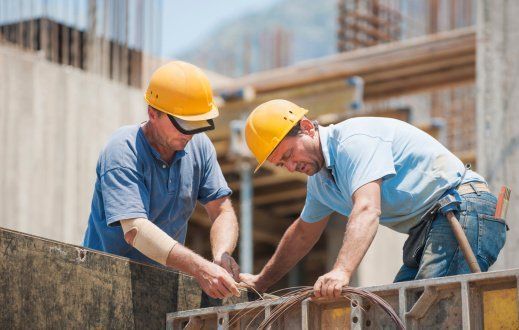Experienced Personal Injury Law Firm of Robert Doig, LLC in Media, PA

After you have been injured, seek legal assistance from the personal injury law attorney at the Law Firm of Robert Doig, LLC in Media, Pennsylvania. We specialize in representing clients in serious construction and industrial catastrophic injuries and wrongful death cases. We work very diligently to research each case carefully and utilize every resource possible to make certain we have all the facts and highly qualified experts.

CONSTRUCTION ACCIDENTS:
CONSTRUCTION ACCIDENTS:
Falls
OSHA requires that fall protection be used on a job site when workers are at certain elevations or working around open areas. To prevent falls off overhead platforms or through holes in floors, walls, or openings, OSHA requires in certain situations that guardrail, personal fall arrest, and safety net systems be installed to prevent injury. Our firm has handled these cases, including where barricades, stair rails, and covers should have been in place to prevent falls.
Scaffolding
OSHA standards require that scaffolding be erected and inspected by qualified and trained personnel to ensure that it is safely installed. Our firm has handled cases where the scaffolding failed to provide proper access for the workers, platforms were not adequately planked and decked, and guardrails and ladders were not installed which led to hazardous work conditions and falls.
Demolition
Demolition work presents potential hazards, which necessitate that preventative safeguards are in place before the job begins. In handling these cases, our firm, through its experts, reviews the adequacy of engineering surveys' assessment of the condition of framing, supports, and walls, the demolition plan, and the contractors' compliance with that plan, whether floors were demolished one level at a time from top down or instead was the job rushed and safeguards abandoned, and were proper periodic inspections performed — all as required under the OSHA standards. We apply many of the same criteria when evaluating structural collapse cases.
Lifts
Whether lift accidents occur with the use of cranes, large excavators, or other heavy machinery, similar failures are at issue: was there an unsafe load ratio, was the equipment misrigged, was the machine on level ground, a safety lift plan in place, and were the operators and laborers adequately certified and trained in lift procedures.
Electrical Accidents
The use of electrical power is an ultrahazardous activity pursuant to Pennsylvania case law. Property owners are imposed with a high burden to disclose underground electrical power lines to contractors digging on site to ensure that safeguards, including proper markings and labelings, communications, and inspections, are in effect and these accidents are prevented. Our firm has handled matters where high voltage electrical lines were not disclosed to contractors causing explosions and devastating neurologic, brain, tissue necrosis, scarring, and other painful injuries that left workers disabled.
Falling Objects
Tools, parts of machinery, and debris pose a danger on construction sites when they fall onto workers or pedestrians below. Safeguards must be in place, such as toe-boards, nets, canopies, and warnings or cautionary signs to prevent these accidents which can result in head, brain, and neck trauma. Protocols and policies must exist on site to ensure that workers never lift planks, pans alone from above threatening the safety of those co-workers below.
Contact us at (610) 565-9565
to receive the compensation you deserve.
